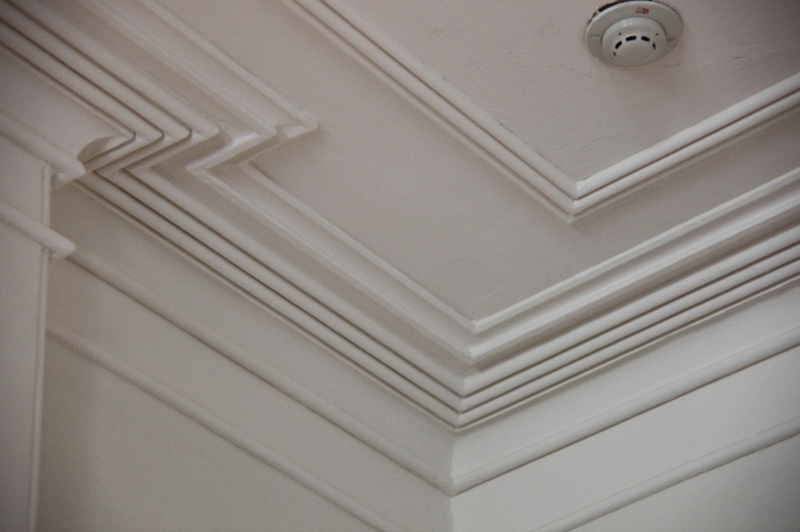If you want to know how to fix water damaged MDF, then you have come to the right article. You can get rid of MDF molds if you use a bleach-water solution, but there are still instructions before and after that. We’ll tackle those instructions below.
Apart from fixing water-damaged MDF with molds, we also included how mold grows on MDF and how to prevent mold growth on MDF. This article also contains instructions on why you need to prime your MDF to safeguard it from damage.

Lastly, this article tackles water damage on MDF and whether it is a part of a homeowner’s insurance coverage.
Steps In Fixing Water-Damaged MDF Moulding
Water damage results in different scenarios. Most would often associate it with swelling of MDF boards or peeling paint.
However, in more severe cases, water damage can lead to mold growth. Here are ways to fix mold growth on your MDF.
Step #1. Dry
After your MDF has undergone water damage, a prerequisite to repairing them is letting them dry. If possible, leave them to dry under the sun. This would also help kill mold spores.
If the weather is not as agreeable, then let your MDF dry by keeping the place well-ventilated.
Step #2. Scrape
After drying the MDF board, put on a mask before working on the repairs. This is to avoid inhaling mold spores, which may cause health problems.
Get a spatula and scrape off mold from your MDF. Use a plastic spatula to prevent scratching your board.
After scraping the mold using a spatula, put them in a trash bag. Then, use a still-bristles nylon brush to remove visible mold that you could not scrape off.
Step #3. Vacuum
After scraping off and brushing mold from your MDF, vacuum it to remove any more spore particles. Then, throw the trash bag and the vacuum bag away. Make sure both are properly sealed when you dispose of them.
Step #4. Bleach-and-water solution
First, put on gloves. Then, create a bleach and water solution by mixing equal amounts of bleach and water. Get your sponge, then dip it into the bleach-and-water solution.
After that, wipe the MDF thoroughly. Let it dry after wiping it with the solution before proceeding to the next step.
Step #5. Sand
After drying the MDF, sand the areas that had mold. Use fine-grit sandpaper to get rid of mold that has gone beyond the surface. After sanding, dust off the MDF.
Why prime MDF?
After sanding the MDF, the board would be perfect for priming. Priming your medium-density fiberboard is necessary to protect it from another case of water damage.
Priming and sealing your MDF would prevent it from swelling or distorting. Since fiberboards are heavily absorbent, even a tiny amount of water can lead to swelling.
We recommend using glue or oil-based primers, especially on the edges of your MDF, to prevent them from swelling. Use a fast-drying primer to avoid moisture. As for sealers, we recommend the use of drywall or acrylic paint sealers.
Why does mold grow on MDF?
Since MDF are semi-porous, it is easy for them to house water. In turn, this results in mold growth from the inside of your board, in between the wood layers.
The material expands due to water damage, which gives space for mold to grow and thrive. Mold may even be due to poor ventilation, which traps moisture inside your house and clings onto your furniture with MDF.
For MDF surfaces, you can use a solvent-based paint primer. You can also use stain covering primers from KILZ or Zinsser. We recommend using PVA glue, one that does not require dilution, as a sealant on MDF surfaces.
How to prevent mold growth on MDF?
To prevent mold growth on your MDF, you have to have the following:
Antibacterial wipes
These wipes should have bleach to kill the mold. Otherwise, you would just be feeding your mold with moisture. Hence, it is wise not to use sanitary wipes in removing mold on MDF surfaces.
Mold control spray
Another thing you can use is mold control spray. However, do not just buy any mold control spray. Use one with low toxicity so it won’t be harmful to you and your home. You can choose between Concrobium and TSP.
Apart from these two, to prevent mold growth on your MDF, you must protect it from water damage. Check your house for leaks and keep your home well-ventilated.
Also, prime and seal your MDF. This way, your board would not absorb water and be home to mold.
Water damage on MDF and insurance
Generally, water damage due to neglect is not included in your insurance coverage. Mold is often seen as a result of negligence.
However, if the mold is seen as water damage’s extension, then your insurance may cover most or all of your mold removal cost. To clarify whether you can get your insurance, contact your lawyer and your insurance company.
Conclusion
Now that you are aware of how to fix water damaged MDF, you have become a more capable homeowner. We hope this article about removing molds helps you with your mold problem at home and in preventing it from growing further.
